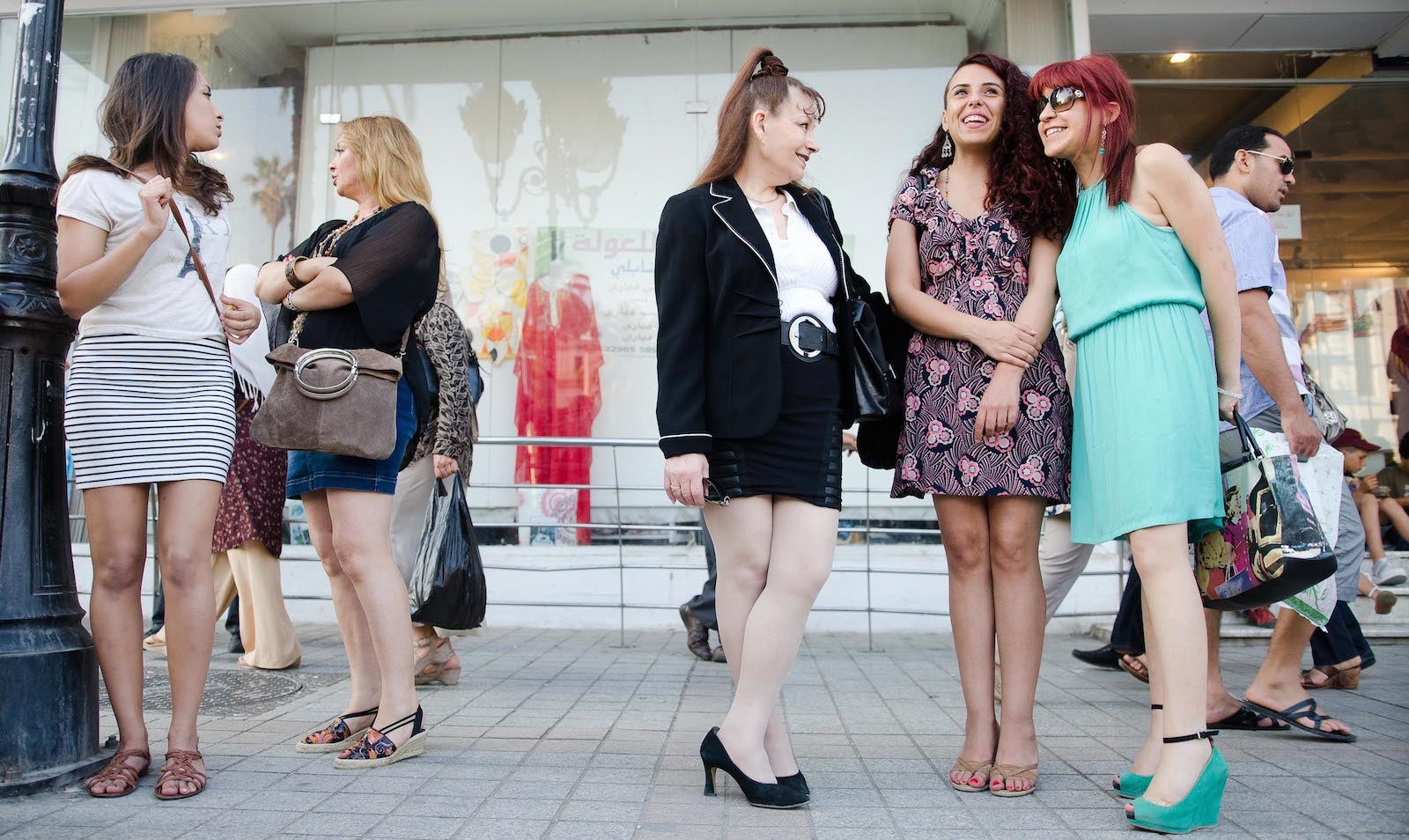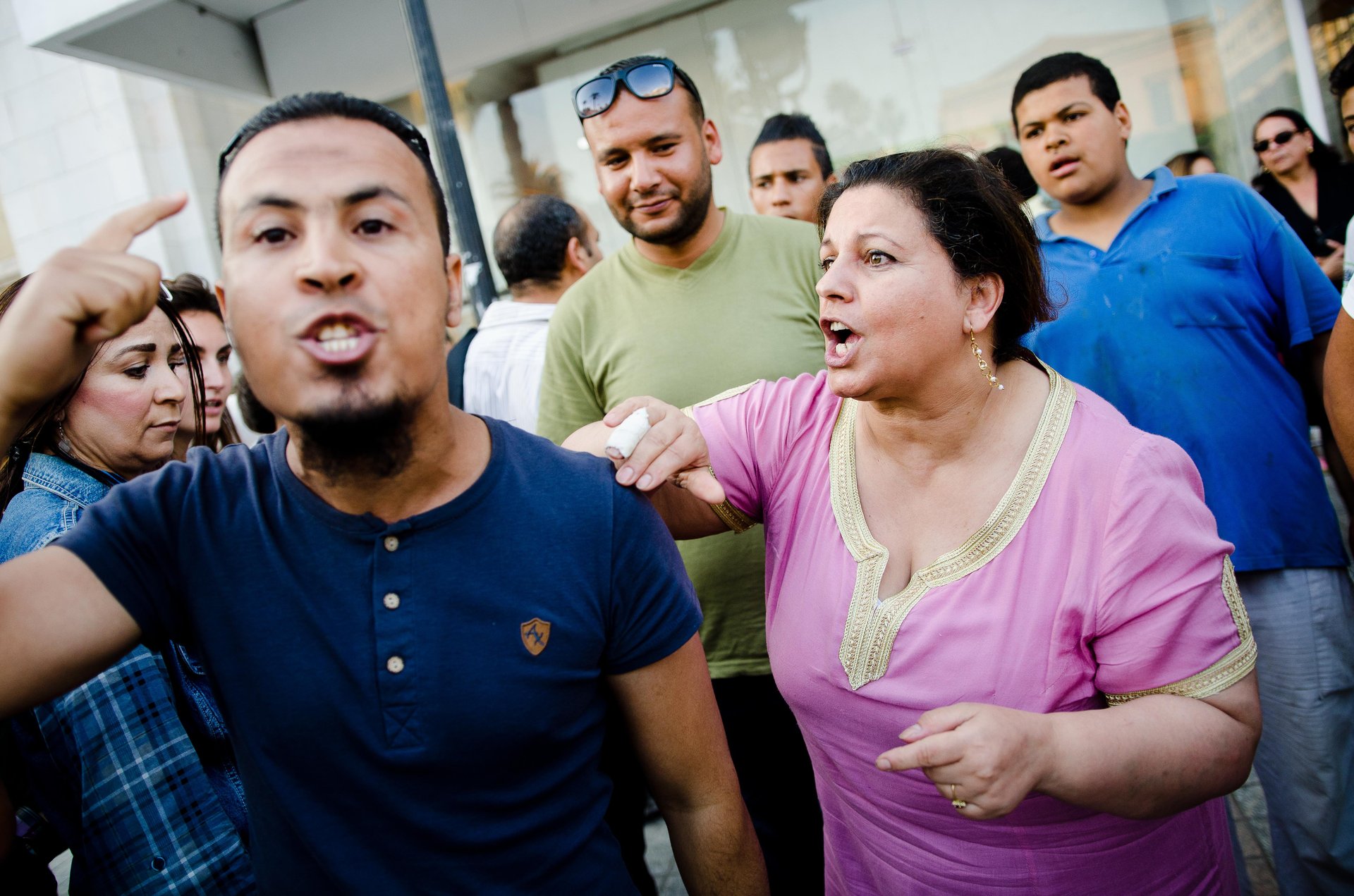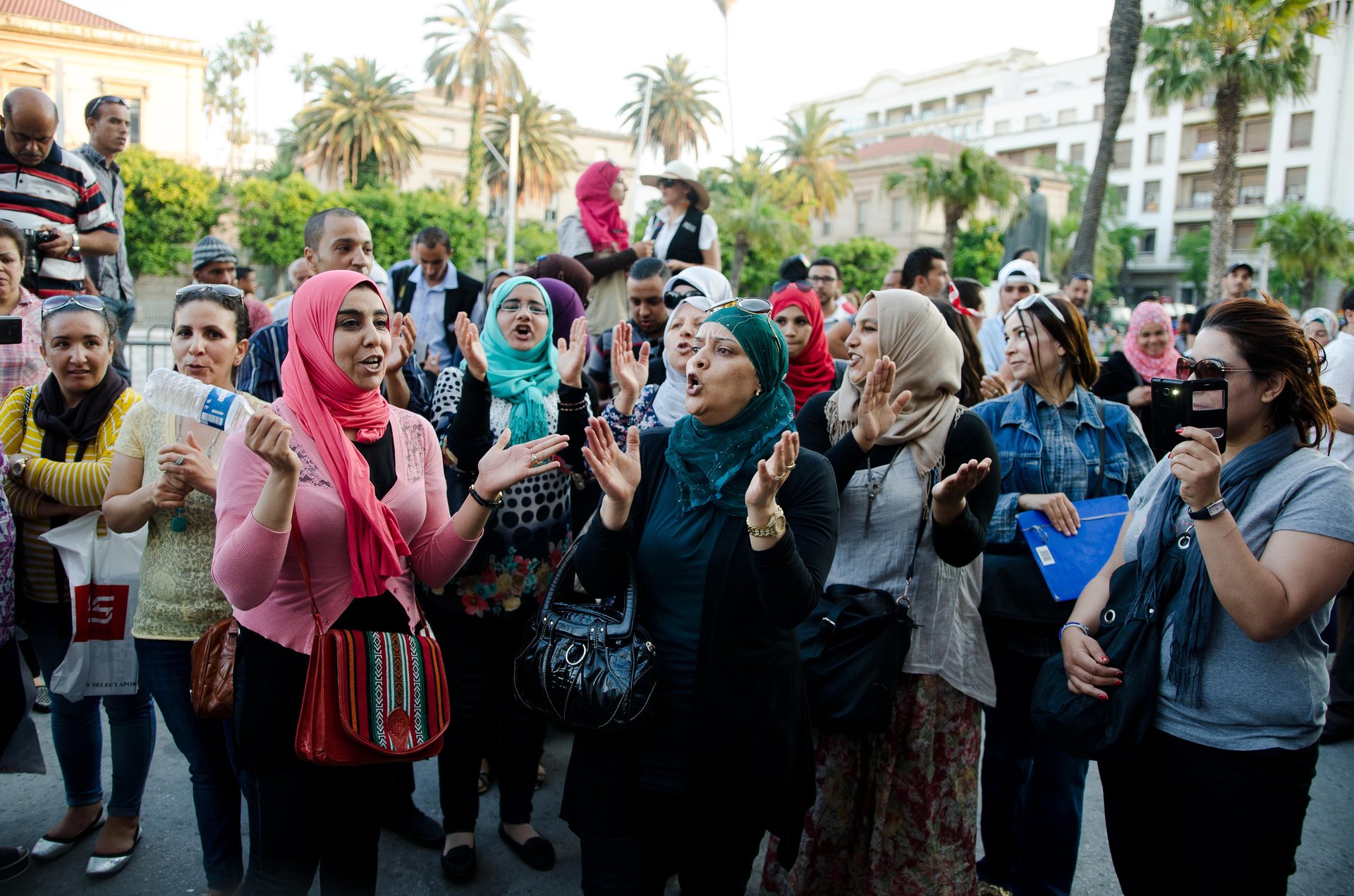Women in everything from hijabs to miniskirts showed up to Tunisia’s first “slutwalk”
Rachid Ben Othman, 56, wore a white linen button-down and a pair of khaki shorts that showed his knees for Tunisia’s first Slutwalk.


Rachid Ben Othman, 56, wore a white linen button-down and a pair of khaki shorts that showed his knees for Tunisia’s first Slutwalk.
Technically named the Worldwide Day of the Miniskirt, the event was held in Tunis on June 5, and was modeled after Canada’s 2011 Slutwalk campaign. Ben Othman, president of Tunisia’s League for the Defense of Secularism and Freedom, co-organized the protest with feminist activist Najet Bayoudh, “in solidarity with Algerian women and with oppressed women all over the world.”
In early May 2015, an Algerian student was banned from sitting her law school exams because her skirt was deemed inappropriately short. “This is a coup de colère in response to what happened in Algeria,” Ben Othman told Quartz before the protest started on Avenue Bourguiba, the main artery that cuts through Tunis’s downtown. “It is also to say to the Islamists [here] that a woman is not a slave; her liberties belong to her.”
But the protestors were a small presence; fewer than ten women—and even fewer men—showed up in a collection of shorts, dresses, and skirts. More didn’t show because “women are scared,” protestor Loola, 65, explained. “Many people told me not to come here because [wearing a miniskirt is] a way of making a woman an object,” another female protester said. “But putting a woman in a headscarf makes her an object as well.

There weren’t enough protesters to march, so they stood in a small semi-circle. A crowd amassed. Some passers-by began arguing with the protestors, but most people just stopped to stare. A few men stood close to the women, their eyes travelling up their bare legs.
Anja, 21, was walking down the street when she decided to pause and watch the event unfold. “I wouldn’t wear a miniskirt on the street here because it attracts too much attention,” she said, arms folded across her chest.
Basma, 53, was one of the first to arrive at the protest, pulling off the flowing, flowered skirt that reaches her ankles to reveal a denim miniskirt. “I didn’t want to attract attention in the cab ride over,” she explained. But attracting attention is undoubtedly what a Slutwalk in a Muslim country does, even in a region with secular leanings and a tourism industry that brings plenty of bare-limbed Europeans into town on vacation.
Women’s rights are regressing
Tunisian women cast their first ballot in 1957. By 1962 they had access to birth control, and in 1965 abortion was legalized, ten years before its former colonizer, France. Still, the fight for gender equality is an ongoing struggle in this country; sexual violence and harassment at home and at the hands of the state has remained a reality for women in Tunisia for decades.
Although Tunisia’s new constitution explicitly stipulates that “the state is obliged to act through public authorities by taking measures to eliminate all forms of violence against women,” many of the Slutwalk protesters lamented that their rights have regressed since Tunisia’s 2011 revolution.
“There is a phenomenon of fear and frustration with Tunisian men,” protestor Dalinda, 54, said as she smoothed the front of her blue and green patterned sundress. “Things have changed a lot after the revolution, it did not used to be this way. My mother and grandmother talked about how different things were.”
Nadim, 19, stopped to watch the protest, although he doesn’t agree with its message. “Especially after the revolution, men and women are equal,” he told Quartz. “The law protects women more than men.” From his perspective, there are more important issues to discuss, namely petrol.
Earlier in the day, a separate protest organized by the League for the Protection of the Revolution (LPR), an Islamist group dedicated to preserving the achievements of the revolution and “reinforcing Tunisia’s Arab-Muslim identity,” kicked off a few blocks further down Avenue Bourguiba. Nearly four hundred people attended that march, protesting corruption and the lack of transparency surrounding the country’s natural resources.
When the rival demonstration was violently put down by the police, several dozen female protesters, mostly in headscarves, migrated down the street to find themselves in front of a group of bare-legged women. “Maxi, mini! Where is the petrol?” they shouted at the Slutwalk protestors, clapping their hands and ululating.
The false divide: secularism vs. religion
One driving wedge in the Arab world’s discussion of gender equality is a perceived incompatibility between secular values and religion. Many attending the miniskirt protest lamented Tunisia’s Islamists, equating Islam and religious dress with “regression.” “I am against the veil,” Ben Othman said, “because it’s never been a choice. It’s something that’s been imposed since childhood.”
Secular feminism, on the other hand, has been accused of boxing out entire segments of the Tunisian population. Amel Grami, professor of gender studies at Manouba University, told Al Jazeera in 2014 that “feminist activists in Tunisia have committed serious errors by developing into an elitist movement, opting to ignore marginalized women and adopting a western model of feminist activism.”

When Egyptian activist Mona El Tahawy published her controversial piece in Foreign Policy entitled “Why do They Hate Us?” in 2012, she was lambasted by feminist activists who accused her of reducing the agency of Arab women and succumbing to stereotypes of Islam. Tunisian activist Amina Sboui, who gained headlines after posting topless pictures of herself on Facebook to bring attention to “demands for women’s liberation in a patriarchal society,” left the Sweden-based and often topless feminist organization Femen, after accusing it of Islamophobia.
Islam is an inextricable part of the Arab world’s history, language, and culture, even where secular characteristics are also prominent. These issues are often presented as though women must choose between their religion or their human rights, but the reality in these countries is necessarily more complex. Sometimes, the fight for gender equality can even be a reason for unity.
Butyana, 46, arrived at the Slutwalk clad in a gray headscarf and aviators, after the police shut down the petrol protest she was previously attending. “Of course I support these women,” she says, throwing her fist up in solidarity with some of the Slutwalk protestors.
Her friend Zohra, 49, nods in agreement. “My daughter doesn’t wear the headscarf,” she tells Quartz. “She lives her life, has her boyfriend, wears her miniskirts.”
For them, Tunisia’s first Slutwalk does not symbolize a divide between women in the country. “Today it’s the miniskirt, tomorrow it’s my veil,” says Zohra. “My enemies are not my sisters, these women. My enemy is the machismo that is found in the family and in the political state.”